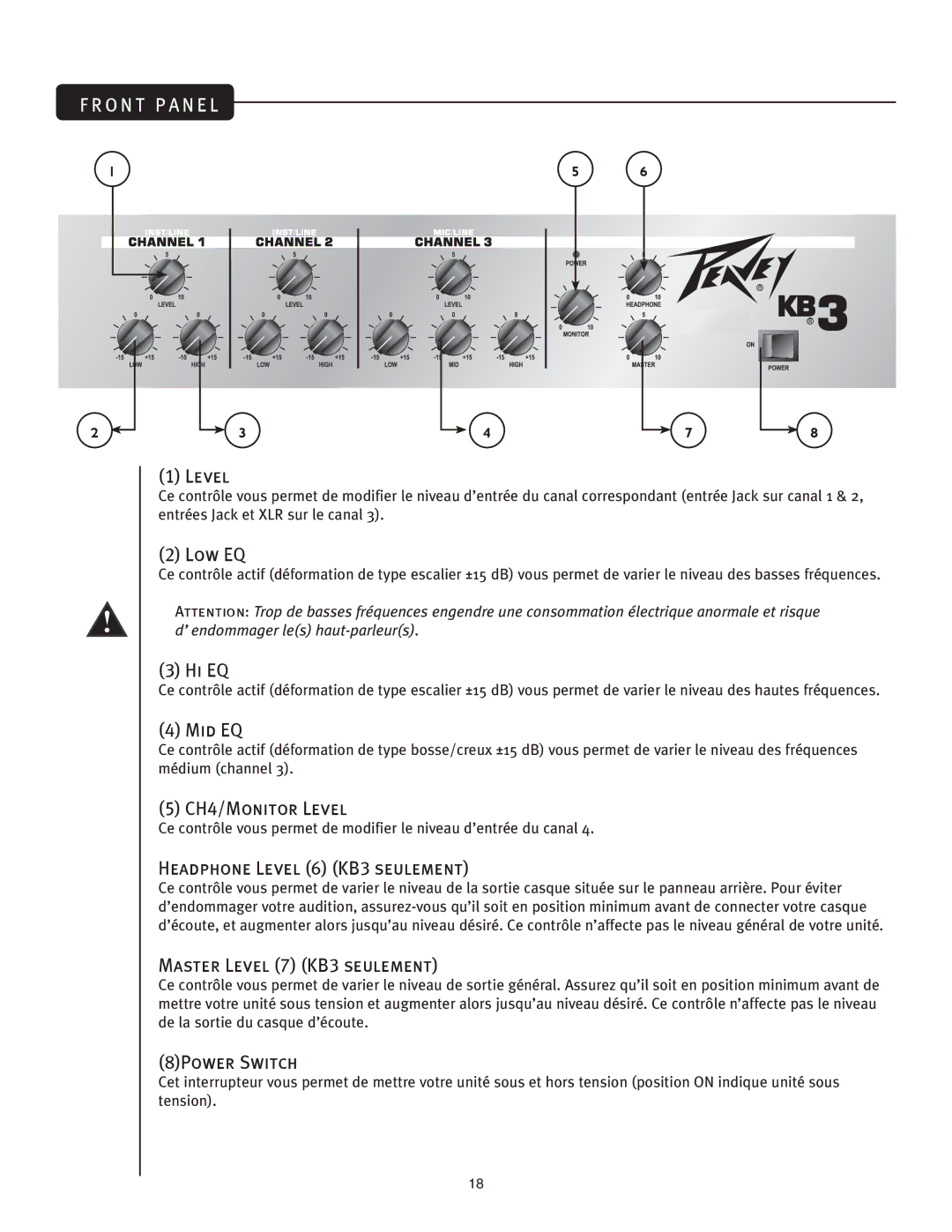KB2/KB3 specifications
The Peavey KB2 and KB3 are renowned keyboard amplifiers designed for musicians seeking high-quality sound and versatility. These amplifiers have become staples for keyboard players, allowing them to amplify their instruments effectively while maintaining audio clarity.The KB2 features a 40-watt power output, making it suitable for small to medium venues. It includes a single 12-inch speaker and a high-frequency driver, providing a well-rounded sound with a broad frequency response. The amplifier's 3-channel mixer allows for multiple instrument connections, including keyboards, microphones, and other line-level devices. This feature is particularly advantageous for live performances, enabling musicians to blend different sound sources seamlessly.
In contrast, the KB3 takes the capabilities a step further with an impressive 65-watt power output. It also incorporates a 12-inch speaker and a high-frequency driver, ensuring that sound projection remains clear, even at higher volumes. One of the standout features of the KB3 is its built-in reverb, offering musicians the ability to add depth and ambiance to their sound without needing external effects processors. Additionally, the KB3's 4-channel mixer provides greater connectivity options, accommodating a wider range of instruments and effects.
Both models boast Peavey’s patented "Sure Grip" handles, which make transportation easy. They are built to be durable, ensuring that they can withstand the rigors of frequent use, whether at gigs or rehearsals. The contoured cabinet design contributes not only to aesthetic appeal but also to the sound dispersion, allowing the sound to spread evenly throughout a space.
In terms of connectivity, both amplifiers include auxiliary inputs for connecting devices like MP3 players, enabling musicians to play along with backing tracks. They also feature a headphone output for silent practice, catering to different environments and situations.
Overall, the Peavey KB2 and KB3 deliver professional-grade performance with user-friendly features, making them popular choices for keyboardists of all levels. Their construction quality, sound fidelity, and versatility solidify their reputation in the music industry, ensuring that they remain a reliable option for live performances and practice sessions alike.

